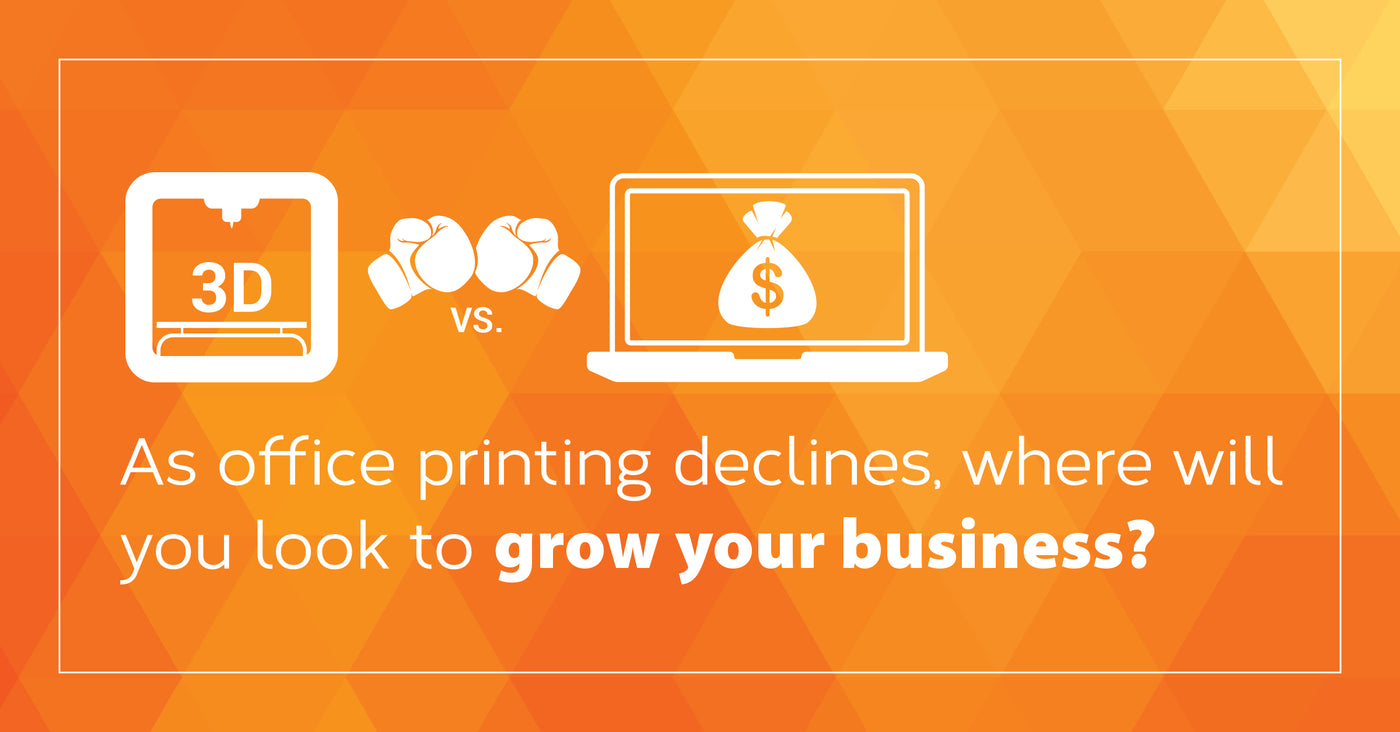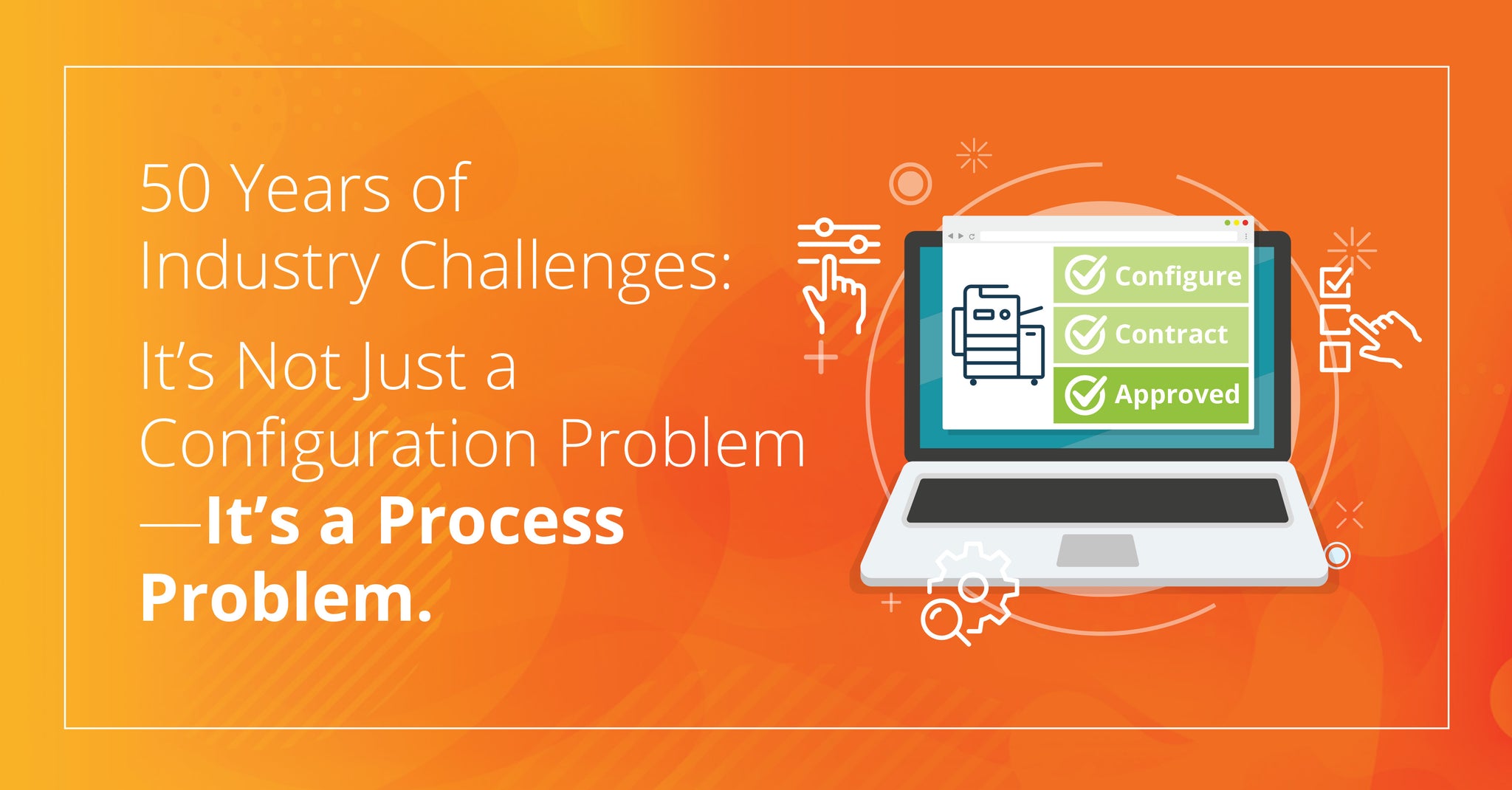
It’s a trap! The difference between office printing and 3D printing is vast. If you are thinking about adding 3D printing to your business today, it could be a big mistake and a waste of valuable resources. By comparing the 3D printing market to another adjacent market, like computers and laptops, we can compare how your business can make a sound business decision about what new opportunities you should explore.

Market Size: 3D Printing vs. Computers and Laptops.
The current market for printers and laptops in North America is almost $100 billion annually. The 3D printing market is less than $2 billion. 3D printing is forecasted to grow to $20 billion within 10 years, it’s tiny compared to computers. 
Customer Penetration.
Every single office employee in North America has a computer. Everyone. 3D printing is a market that is dominated by unit sales by home user enthusiasts (read Popular Mechanics subscribers). The business placement is concentrated in engineering, architecture, and manufacturing. Will business usage of 3D printers increase over time? Maybe, but not until there exists an application that every business needs. 
Scalability.
If your sales team is comfortable selling office print hardware, then PCs use pretty much the same mechanics. When a PC breaks, it needs replacing. You provide a SKU and a price, and upsell to the best possible product. Fleets are often outfitted with multiple units, which open opportunities for financing, and upselling solutions such as cloud back up, productivity software, and security solutions. The average PC lasts 4 years. If you have 10,000 office employees in your customer base, then they will buy, on average, 8-10 PCs each working day. 
Getting an Appointment.
If you call a customer and offer a 3D printing presentation, you will likely get a lot of attention. Those appointments will take A LONG TIME. In this example, a little plastic boat toy takes anywhere from 2 hours and 10 minutes to 6.5 hours. Once the novelty wears off, your reps will not likely enjoy long appointments that have very low chance of closing. Selling PCs is not going to elicit the same excitement from customers “wow, you sell PCs? Where have you been all my life?” That said, your existing business relationship should open the conversation. 
Service Model.
The good news is that 3D printers are unreliable! If you are trying to keep your service technicians busy, then 3D printers will do just that. The technology is changing rapidly and rapid changes equal poor designs. Think about a new printer or MFP model; the first six months are full of problems. Imagine entirely new manufacturers and technologies every six months. PCs are not repairable. In fact, most businesses plan on a set time to roll out new models, as a PC problem can represent an entire day of lost employee productivity. Service is done remotely as the software that runs the device is the important thing, not the device itself. 
The worldwide market for 3D printing is predicted to grow to $55.8 billion by 2027. It currently sits at $5.4 billion. Measuring the overall market for computers, laptops, and other technology is so big, it’s almost too unwieldy to measure but here is a good measure: there were 71.5 million PCs sold in North America in 2015, and that equates to almost $100 billion. That does not even consider the software that runs them, nor the ancillary hardware that supports PCs.
I can see the attraction to 3D printers on the part of dealers. There are pockets of success today for sure, and there is a tremendous hype around them. If your business can afford to plan for the 10-year event horizon when the dream might become reality, then investing in 3D could be a good option. But the PC business is here today. It’s in every single customer you have, and it’s a giant market.
As an owner, you get to decide which direction you want to take your business, but one thing is for sure: a strategy is required. You don’t stumble into business growth by accident.


